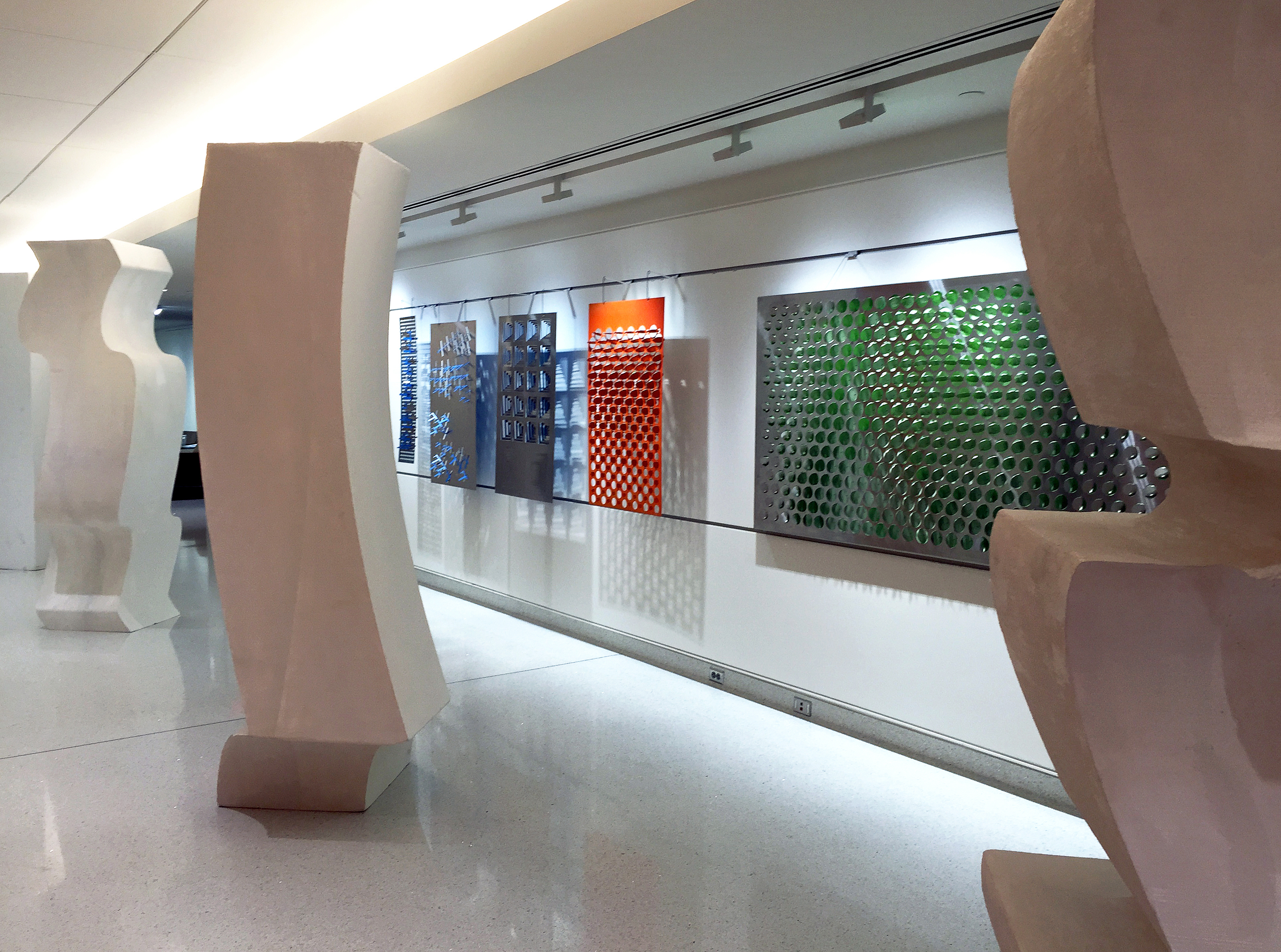Virginia Tech students invited to show work at International Contemporary Furniture Fair

The Virginia Tech Center for Design Research will showcase experimental student work developed with emerging digital technology as part of the 27th annual International Contemporary Furniture Fair.
The ICFF, North America’s premier platform for global design, will map the frontier of what’s best and what’s next at New York City’s Jacob K. Javits Convention Center, May 16-19. The show is expected to attract more than 32,000 visitors to view contemporary work from top international designers and more than 700 exhibitors from around the world.
The 2015 exhibition by the College of Architecture and Urban Studies’ School of Architecture + Design, “Technological Material Transformations,” represents the school’s fifth invitation to exhibit at the prestigious event.
The Virginia Tech Center for Design Research encourages student research and collaboration across disciplines to examine and push the boundaries of design and the framework of education, bringing pedagogy and practice face to face with material and technology. The current exhibition created through the center explores the potential for digital fabrication to enable new modes of architecture, design, and education.The work is a snapshot of a decade of research and development and includes the results of recent courses and studios exploring technology in the design and production process.
“Digital design and robotic fabrication are an extension of traditional modes and methods that expand pedagogical constructs centered about making, ” said Nathan King, research coordinator of the Center for Design Research and assistant professor of architecture in the School of Architecture + Design.
The exhibition showcases experimental projects developed with digital tools in the center’s undergraduate studio. “Sliced Towers,” is a display of monolithic blocks exploring the relationship of technology and form, produced by an ABB IRB 6640, 3.2 meter robot.
“We are excited about the robot as part of a complete digital design workflow that allows us to exploit the capabilities of the computer as a tool for design generation, fabrication, and comprehensive evaluation,” said David Clark, Center for Design Research technology officer.
The following fourth year architecture students have produced work using the robot for the "Sliced Towers" portion of the exhibition:
- Aspen Brown, from DeWitt, Virginia;
- Rajkomal Chowdhury, from Flushing, New York;
- Mykayla Fernandes, from Blacksburg, Virginia;
- Kelly McCarthy, from Columbus, Ohio;
- David Scurry, from Dry Fork, Virginia;
- Sarah Spanski, from Columbus, Ohio;
- Shannon Standish, from Charlotte, North Carolina;
- Agnes Warneford-Thomson, from Richmond, Virginia; and
- Nicole Valentin, from Ashburn, Virginia.
Also highlighted in the exhibition, Brian Kato, from Fort Collins, Colorado, a fifth-year architecture major, will present his work in dynamic fenestration with “Articulating Lens,” and David Kolodziej, from Ewing, New Jersey, also a fifth-year architecture major, designed “Porous Wall,” a demonstration of his innovative use of 3-D printing to create formwork for concrete elements.
An underlying theme of the exhibition is the examination of how architecture and design education should evolve in response to a changing environment. Robert Dunay, FAIA and director of the Center for Design Research explained, “We are in the midst of another industrial revolution — softer, less obtrusive, faster, more pervasive. Analog, mechanical, and electronic technologies are being augmented by the digital. All aspects of daily life are changing through the integration of things made of atoms and things made from bits. We are questioning how design education should respond.”
The work builds on investigations into digital technology initiated with LumenHAUS, for which Dunay and Clark were primary faculty. King contributed his robotic expertise to the project as he was finishing his Ph.D. at Harvard. LumenHAUS won the International Solar Decathlon competition in Madrid, Spain and received an AIA Honor Award for Excellence in Architecture in 2012.










